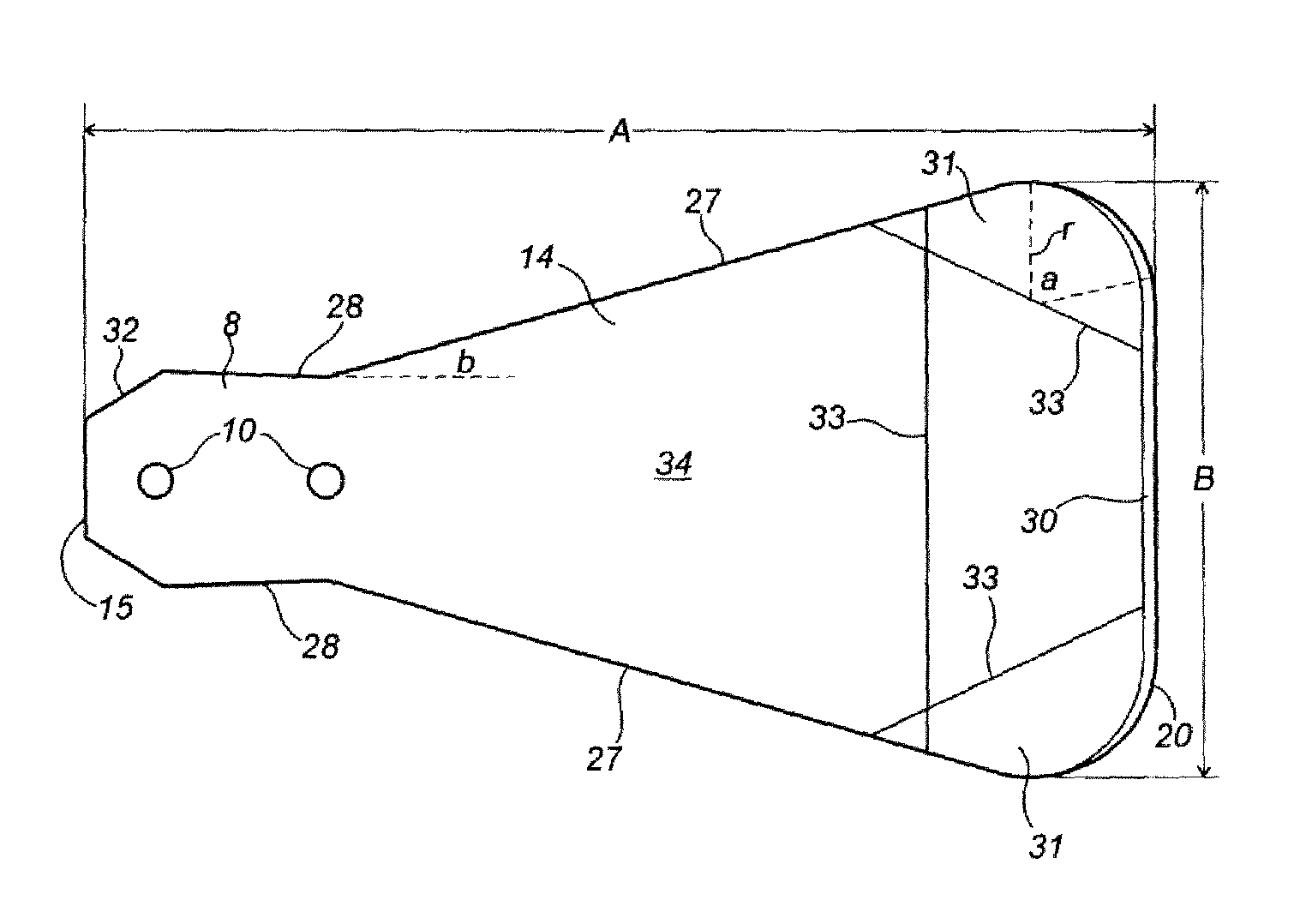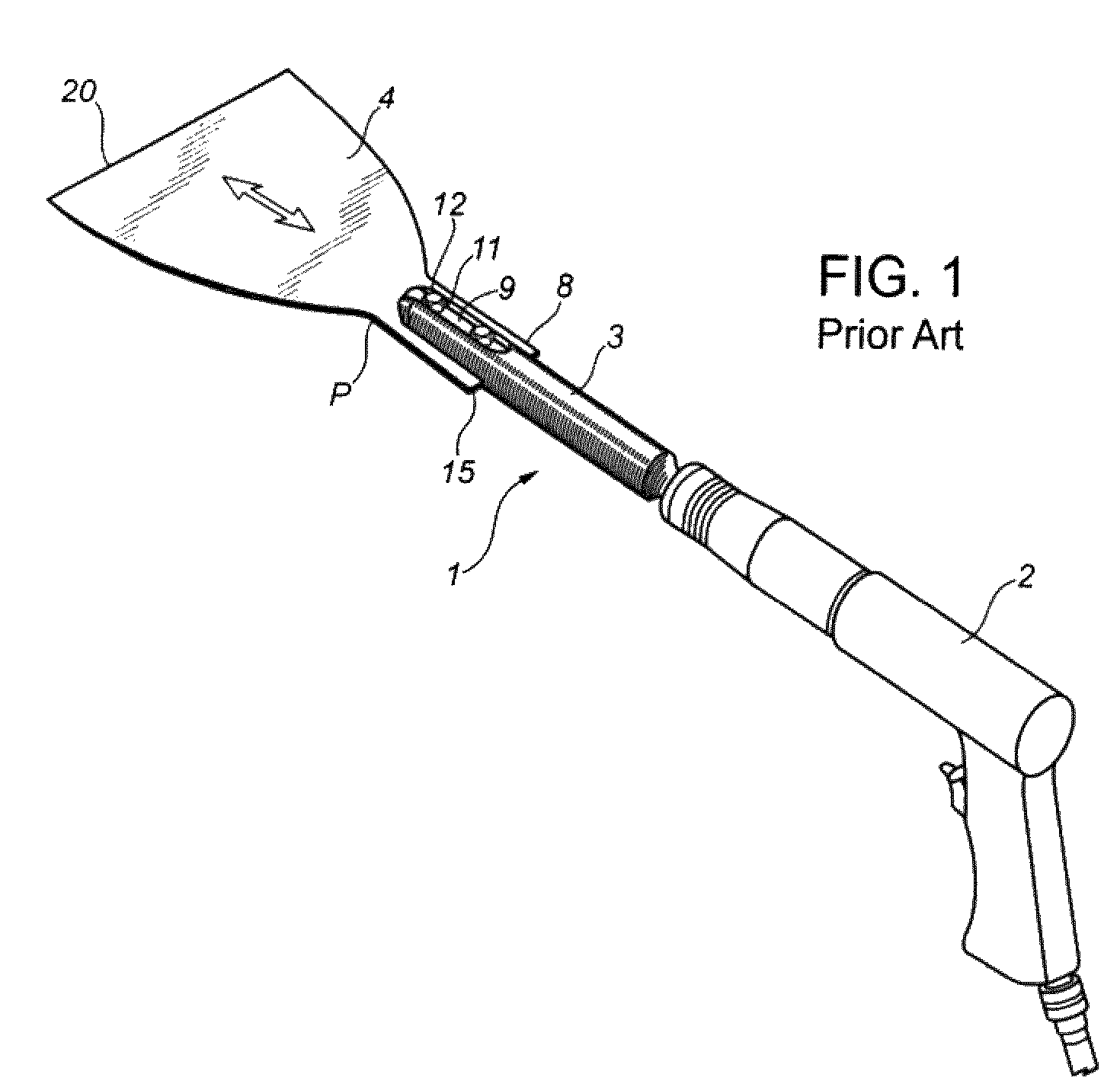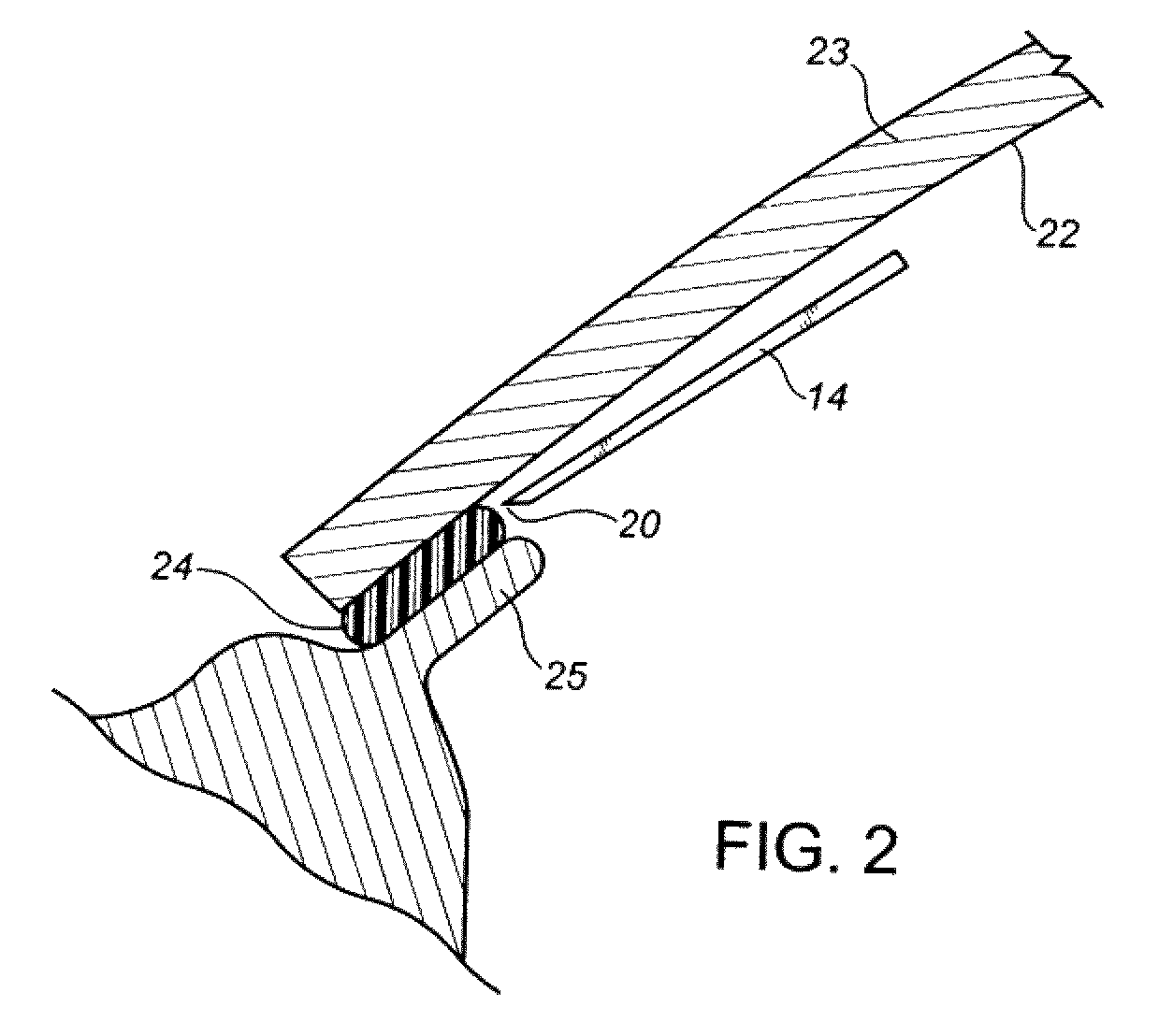Windshield removal assembly, method and blade for same
a technology of windshield and blade, which is applied in the direction of metal sawing devices, sawing devices, sawing apparatuses, etc., to achieve the effects of reducing the risk of damag
- Summary
- Abstract
- Description
- Claims
- Application Information
AI Technical Summary
Benefits of technology
Problems solved by technology
Method used
Image
Examples
Embodiment Construction
[0060]The windshield removal assembly 1 comprises a reciprocating power tool, such as an air gun 2, shaft 3 and blade 4. FIG. 1 shows the inventor's prior art version of the windshield removal assembly as described in U.S. Pat. No. 6,862,968 and U.S. Published Application No. 2005 / 0126359, wherein the power tool is an air gun 2, the shaft 3 reciprocates in a back and forth movement along the longitudinal axis of the shaft 3. The blade 4 is shown with its bell-shaped configuration. The stress point mentioned above, at the joining of the side edges to the shank, is shown at P.
[0061]The present invention is shown in FIGS. 2-7, with like parts, compared to the prior art device of FIG. 1, being labeled with the same numerals.
[0062]FIG. 2 is schematic in nature, and is of assistance in describing the operation of assembly of the present invention. When assembled and operated, the blade 14 preferably reciprocates with a throw or travel of about ½ inch. The blade 14 is pressed against the i...
PUM
 Login to View More
Login to View More Abstract
Description
Claims
Application Information
 Login to View More
Login to View More - R&D
- Intellectual Property
- Life Sciences
- Materials
- Tech Scout
- Unparalleled Data Quality
- Higher Quality Content
- 60% Fewer Hallucinations
Browse by: Latest US Patents, China's latest patents, Technical Efficacy Thesaurus, Application Domain, Technology Topic, Popular Technical Reports.
© 2025 PatSnap. All rights reserved.Legal|Privacy policy|Modern Slavery Act Transparency Statement|Sitemap|About US| Contact US: help@patsnap.com



